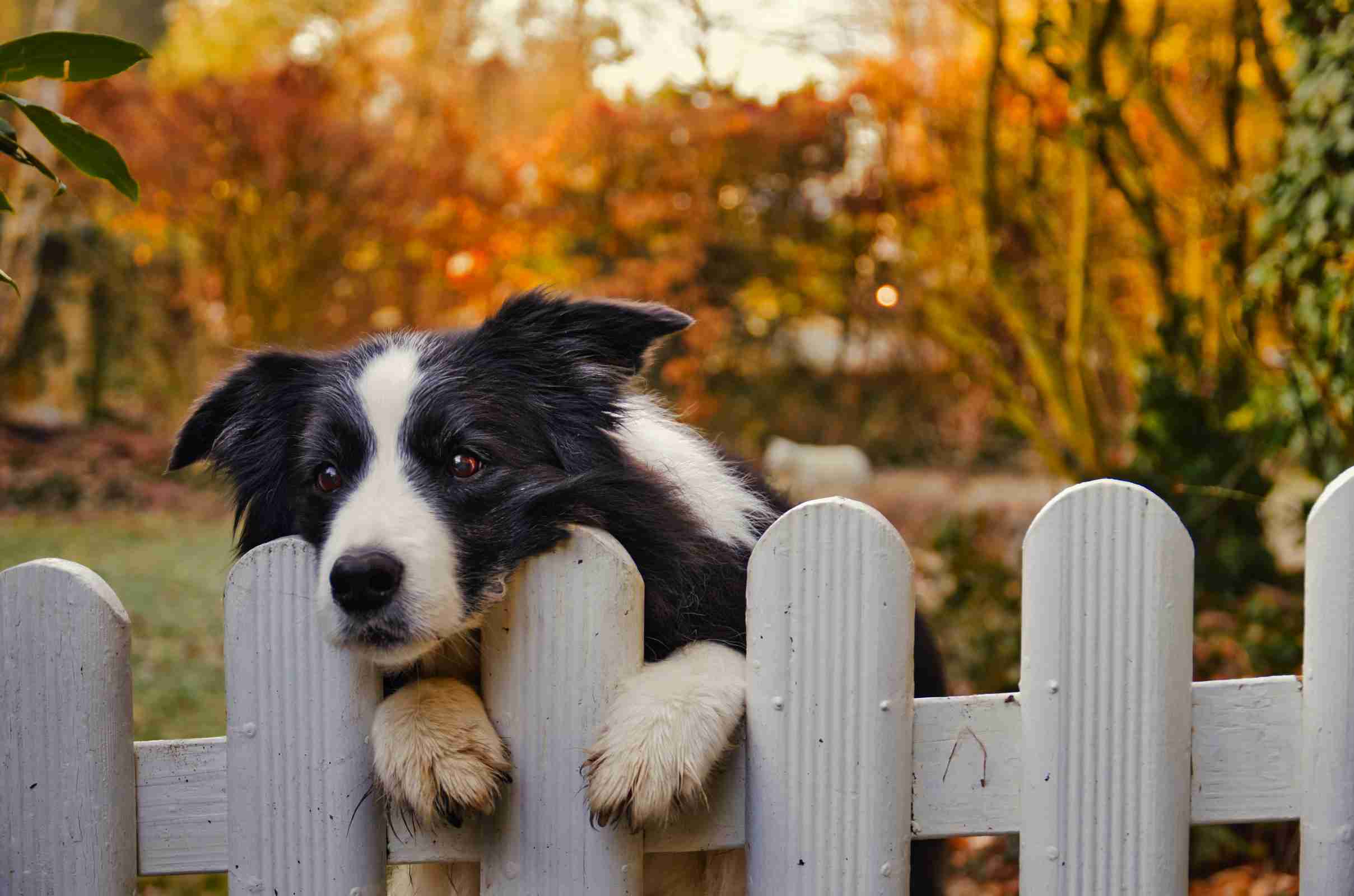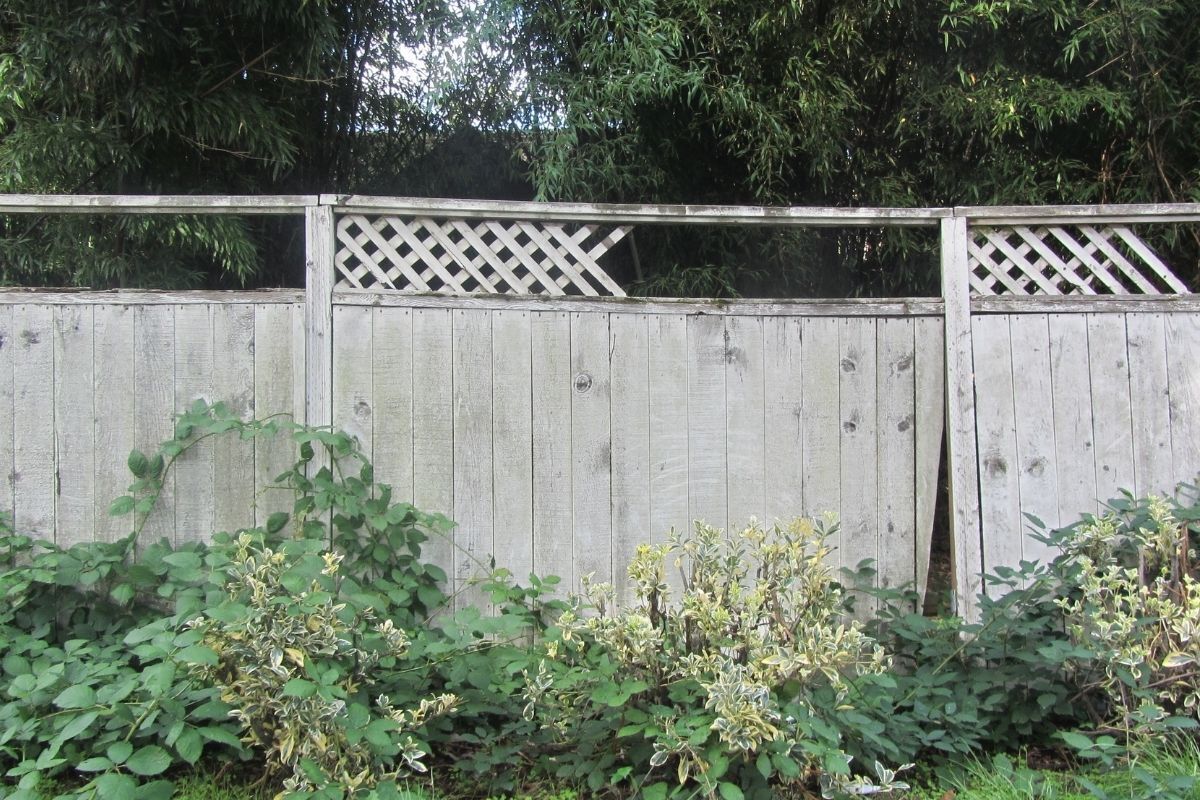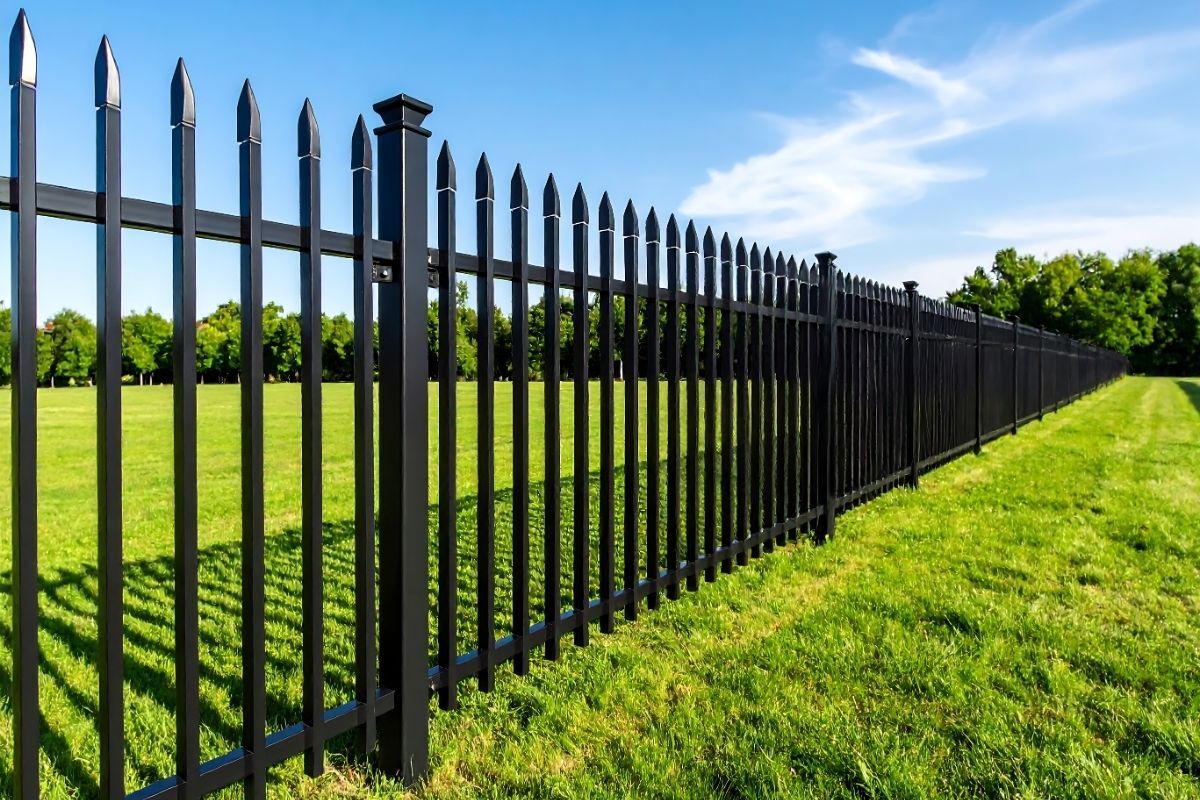There is no one best fence for dogs. What works best depends on the dog’s disposition, size, and breed. From there, we have to consider the size of the yard, HOA requirements, and more.
Fortunately, there are plenty of options that can meet everyone’s needs. Keep reading as we break down various fencing styles to keep our furry friends safely contained without constant maintenance and repair.
The best fences for dogs
Here are some features of various fence types and how they perform as pet perimeters.

Chain-link fences
Chain link fencing is cost-effective and requires little maintenance. Many modular chain link panels are available, making it easy to customize an enclosure’s dimensions.
The major drawbacks are that they are easier to dig under than others and don’t have any aesthetic value. Additionally, the ability to see right through the fence can be good for some dogs but agitating to anxious ones.
Keeping dogs safe from outsiders is also important when discussing chain-link fences. Chain link is notoriously easy to climb. The wire mesh can be cut with common tools. If theft is a concern, it may not be enough.
| Pros of chain link fencing for dogs | Cons of chain link fencing for dogs |
| Affordable | Low aesthetic value |
| Low maintenance | Not the most dig-proof |
| Good visibility | Not very secure |
| Durable |
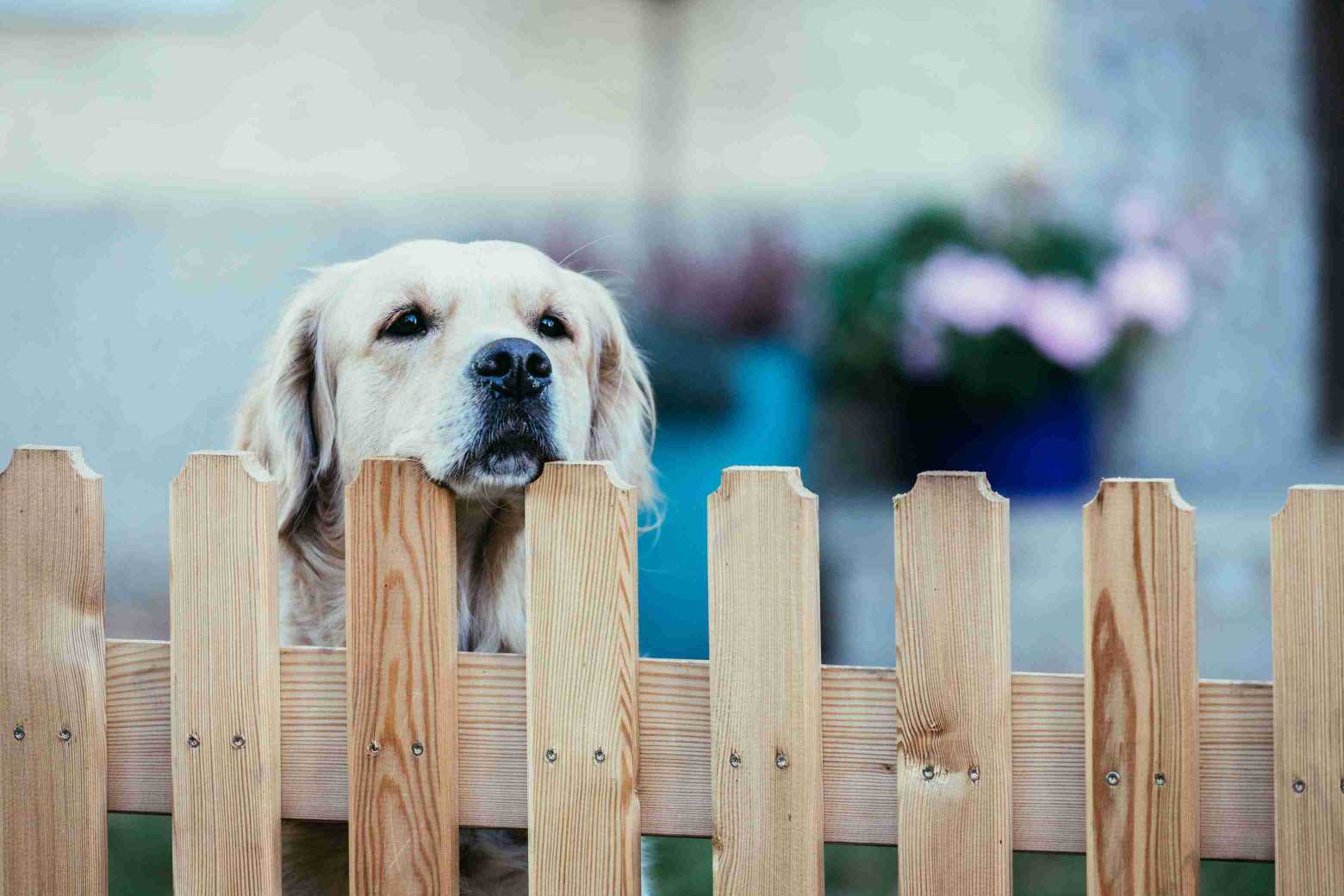
Wooden fences
Most homeowner’s associations prefer wood to chain link, and with so many options, it’s easy to see why. Modern horizontal panels and classic painted or stained pickets are solid options for containing dogs, provided they’re the right height and spacing.
The main challenges will involve digging and scratching. Wire mesh that bridges the gap between the fence and the ground can help. Bury the mesh several inches below ground to deter especially talented escape artists.
Stronger woods like pressure-treated pine, redwood, and cedar can help minimize damage from repetitive scratching.
Choose between panels and pickets based on your dog’s needs. Panels can provide privacy that’s soothing to rambunctious barkers, while pickets can give calmer, sociable dogs a stimulating view of the outside world.
| Pros of wood fencing for dogs | Cons of wood fencing for dogs |
| Many options; highly customizable | Susceptible to scratching |
| Good aesthetic value | May require mods to prevent digging |
| Can offer privacy depending on style |
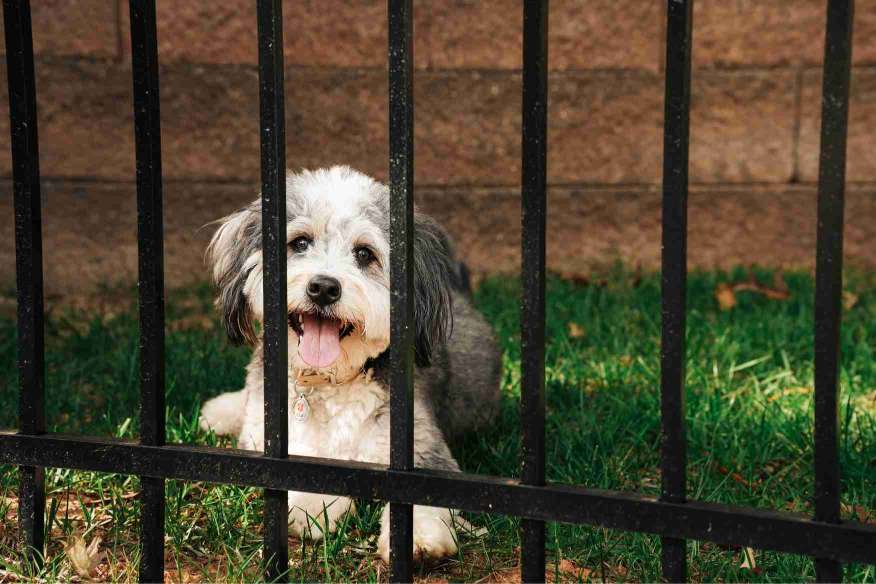
Metal fences
Metal fencing includes wrought iron, steel, and aluminum fencing. These fences can be considered permanent since they last for decades, making them a worthy investment. They also look more upscale than many vinyl or wood fences.
Speak to your installer about dig-proofing your metal fence. There are numerous ways to make a metal fence even more secure.
Overall, your mileage will vary depending on the style you choose. For example, corrugated metal sheeting is strong and offers complete privacy but is visually unappealing.
Owners should also be mindful of metal picket fences with spiked tops. If the fence is not high enough, it could injure the dog as they attempt to jump over it.
| Pros of metal fencing for dogs | Cons of metal fencing for dogs |
| Strongest fencing material | Not all metal fences have the same benefits |
| Long-lasting | Certain styles can be dangerous for jumpers |
| Discourages digging | Often have space between pickets |
| Most visual appeal |
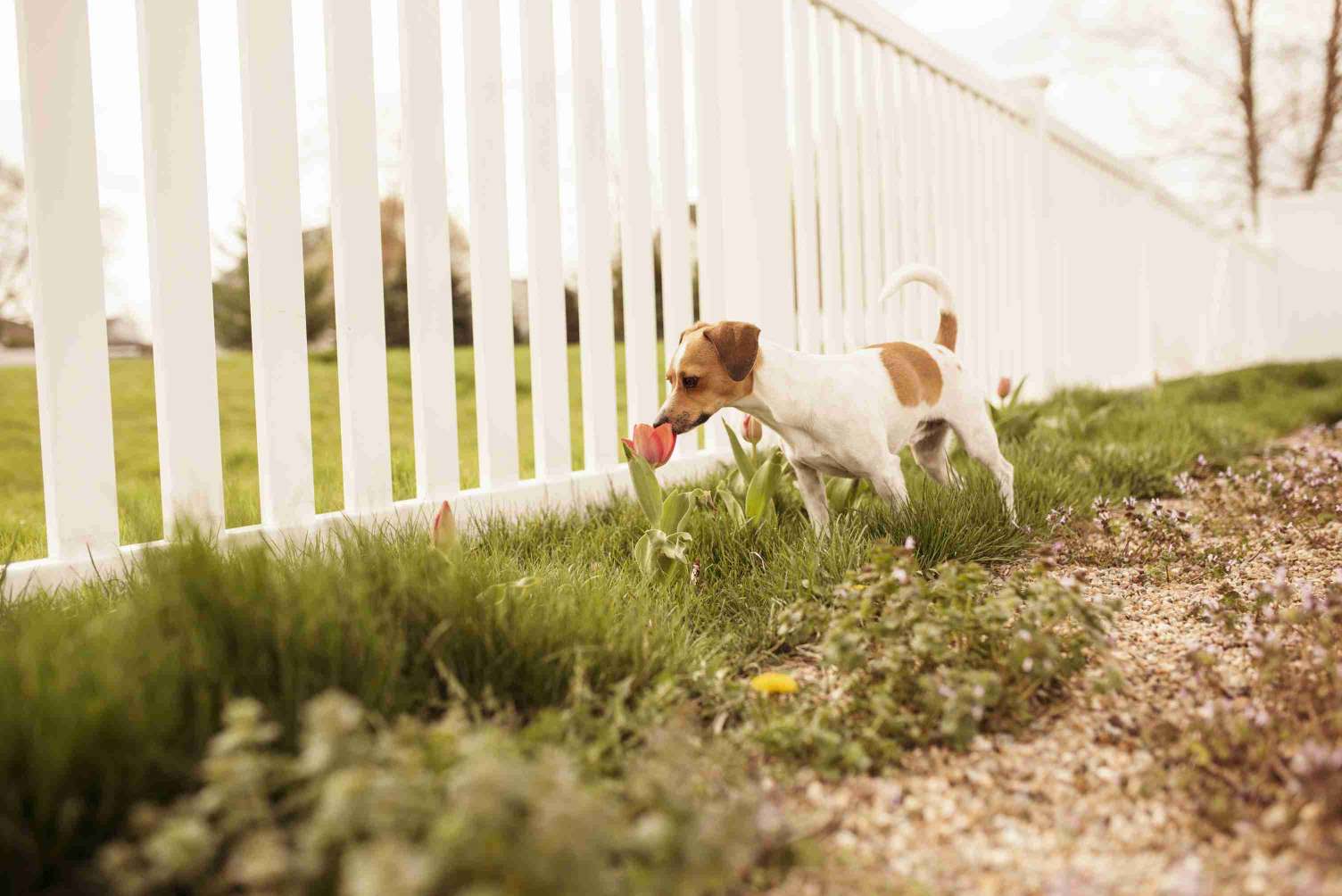
Vinyl fences
Vinyl fencing won’t sustain scratches as easily as wood. They’re also easier to clean if your dog likes lifting his leg on the fence. With a wide variety of attractive styles, and vinyl is a solid choice for many pet owners.
The rub is that you cannot customize a vinyl fence like wood or chain link. Vinyl fences are also less permanent than metal and can be damaged over time by harsh elements or aggressive dogs.
Get the most out of a vinyl fence by hiring a fencing expert to assess your needs. They can perform a professional installation with high-quality materials. Some budget vinyl fences are not big or strong enough to contain a large, highly active dog.
| Pros of vinyl fencing for dogs | Cons of vinyl fencing for dogs |
| More resistant to scratching than wood | Can crack, fade, or warp |
| Easiest to clean | Higher quality necessary for large breeds |
| Many available styles to fit aesthetic |
What about invisible fences?
Invisible fencing systems create an invisible boundary around your property. If your dog attempts to breach it, it will receive an electric shock through its collar. These systems can be affordable and won’t interrupt any visual aspect of your property.
However, invisible fences can lead to behavioral problems in dogs. After receiving a shock or two, dogs can become fearful of their own yard. Other dogs get used to the shock or can tolerate the discomfort and leave the property.
Plus, invisible fences do not protect your dog from outside threats. Other dogs and unwelcome humans can still enter the dog’s programmed perimeter. A physical fence is always the most humane, secure option.
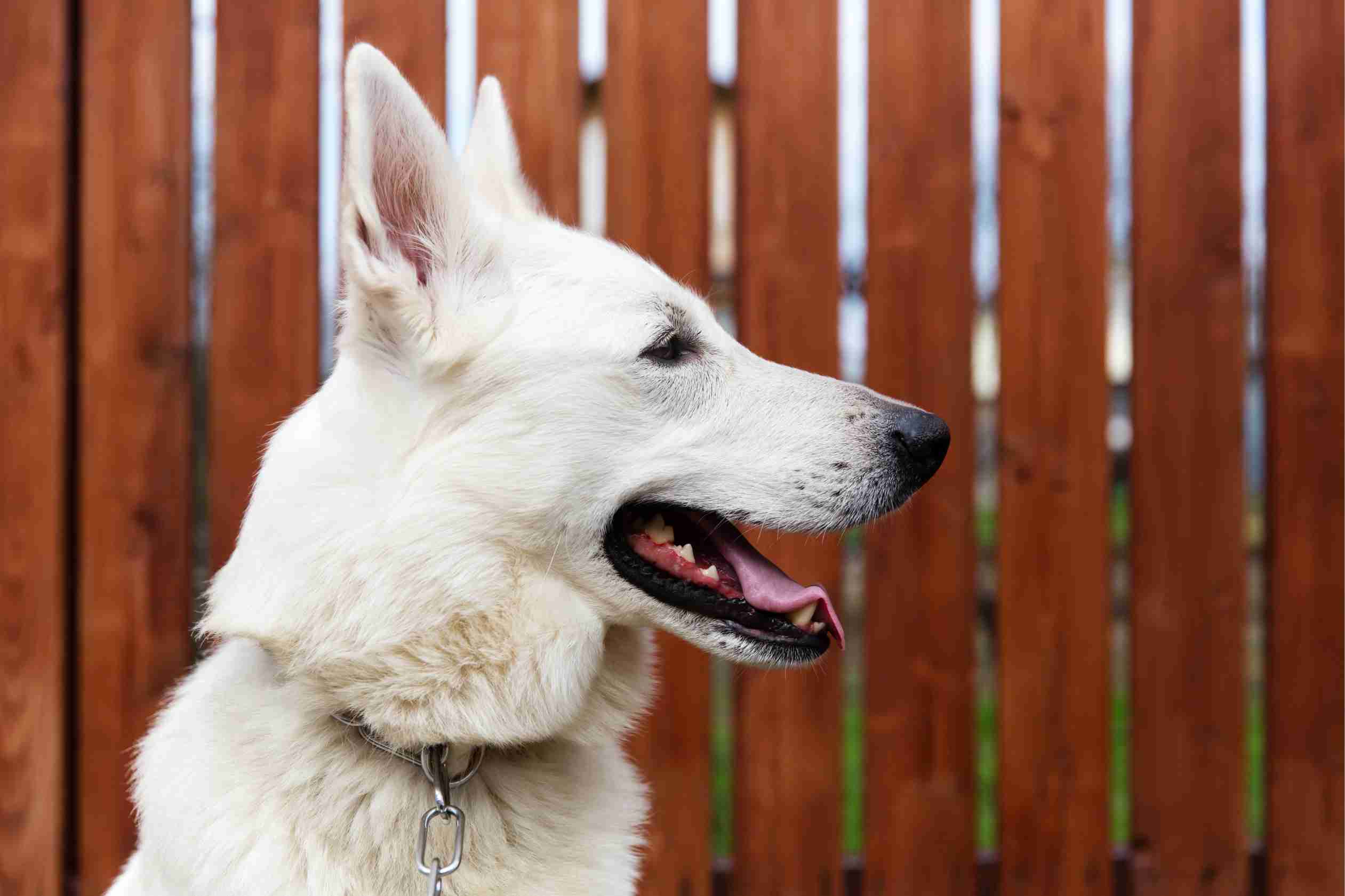
What’s the best fence for large dogs?
One of the most important features is ample height. Most healthy dogs can jump and climb higher than their owners assume. The best fence for large dogs is also spacious enough for them to roam and play. The USDA outlines minimum space requirements for dogs based on the Animal Welfare Act.
A large dog’s activity level and temperament influence which material is best. Wood panel fences are best for dogs who do well with peace and privacy. Wood or vinyl pickets are great for dogs that are not disturbed by outside activity. Metal fencing is a good option for extra security.
What’s the best fence for small dogs?
The best fence for small dogs doesn’t have gaps they can fit through. This includes the spacing of any pickets and the space between the fence and the ground. When this factor is handled, virtually any style or material will do.
The smallest breeds with the spiciest temperaments (think Chihuahua) would likely feel safer with solid panels blocking the view.
What is the best height for a dog fence?
A six-foot-tall fence will contain dogs of most sizes and activity levels. If you have a small to medium-sized dog that isn’t very active, four feet may suffice.
Always prioritize your dog’s needs over general recommendations. For example, the Border Collie is a medium-sized breed, but they can jump higher than most other dogs. During their active years, they need a fence that is at least six feet tall.
What’s the best no-dig fence for dogs?
Aluminum, steel, and wrought iron fences are great for discouraging digging because they’re very strong, and you can install them low to the ground.
The benefits are even greater when the fence comprises appropriately spaced pickets. An experienced fencing company can help you determine the right spacing to keep the dog from getting stuck between them.
Also, metal pickets offer visibility. Active dogs who can see outside are less likely to attempt an escape to investigate the unknown.
Top Rail: The best fences for your best friend
Almost any fence, from wood to vinyl, can be modified or designed to discourage digging. Many panels come in substantial heights to prevent climbing, and today’s picket fences are more durable than they look.
Top Rail takes your needs, plus those of your pet, and creates a secure perimeter with the style and function best for your family. Contact us today to begin your free quote.
